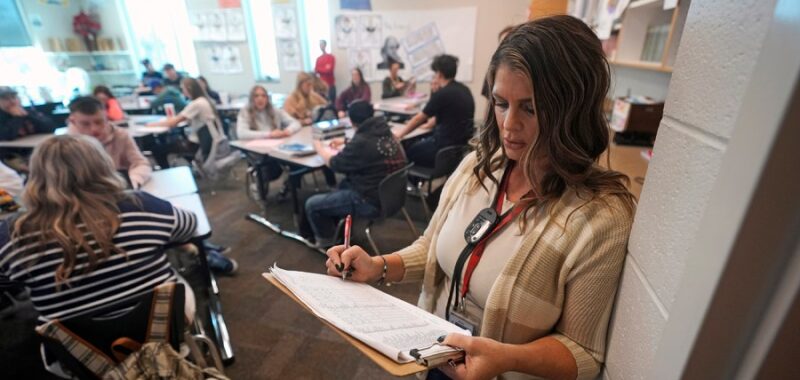
Schools face challenges teaching children how to identify and handle misinformation without getting political, especially in recent days as false claims swirl surrounding the recent hurricanes and the upcoming election.
Some schools opt for a single, annual school-wide assembly on the subject, but others provided teachers with professional development courses so they can incorporate the topic into their classrooms.
“We’re located in upstate New York, and our community is very conservative, so with that comes a lot of information about the term ‘fake news,’ what is being presented to students, how information is collected and then what we do with it once we get it,” said Matthew Sloane, principal of Middleburgh Junior/Senior High School. “So often, students, they’re manipulated by what is presented to them. So, if they’re on a particular website, or if they’re, you know, talking to a relative, and they have strong opinions, they take that as fact, and don’t really understand the process for going a step further to verify the facts.”
“So in the school, what we do is we really focus on how to be curious. When you think something’s a fact, how do you know it’s a fact? How do you verify it?” he added.
Misinformation generally has been an increasing concern, most recently with how the Federal Emergency Management Agency (FEMA) has been responding to the aftermath of Hurricanes Helene and Milton.
Conspiracy theorist Alex Jones is among those pushing false claims, such as that the government can control or that FEMA is offering only $750 to those who have lost their homes and livelihoods in storms.
Former President Trump also falsely said FEMA was withholding aid specifically from Republican hurricane victims.
Some teachers try to take those topics head-on.
“Something like the storms became a big media frenzy across all platforms, traditional media and even on social. And because of that, educators, more than likely, I know some of my local educators, they typically want to talk about the big trends that are happening in the lives of their kids, especially something that can be scary,” said Merve Lapus, vice president of education outreach and engagement at Common Sense Media.
“This year, you’re probably going to see a lot of those conversations happening in schools around misinformation with the presidential debates and the political ads that are out there because it’s become more of a — like a tactic,” said Lapus. “It’s like misinformation wasn’t done just to put it out there, just to kind of troll folks or try and mess with people. It’s out there as a strategy, purposefully, to get people to think differently about something, and that really does kind of shift the way that our kids have to think critically about the content they run into.”
And the era of misinformation is only about to get worse as AI makes it possible to alter photos and videos.
Schools are already struggling with AI bullying, including students creating fake nude images of classmates and one incident where an administrator was almost fired over fake racist audio.
“The decisions are made school to school. Every school district in the country really has a lot of leeway to decide how they’re going to teach any kind of subjects or skill,” said Erin McNeill, CEO and founder of Media Literacy Now.
“So, anecdotally, we know that some schools will have kind of a one assembly presentation about media literacy, or about how to discern the social media posts that you’re seeing […] And then there’s a whole other area where some schools and some teachers in the district are really seeking to integrate media literacy skills into curriculum. There’s some places — usually, from what we hear, usually in the upper grades — motivated teachers might have an elective that really focuses on media literacy in general,” she added.
In Sloane’s school in New York, there is an emphasis on “professionally developing teachers” to ask important questions about how students are fact-finding and incorporating that into multiple different subject areas.
“I think it primarily gets discussed in social studies classes as they discuss American politics and as they discuss society in general, but in our English classes, in our humanities classes, I would say it’s talked about a lot,” he said.

